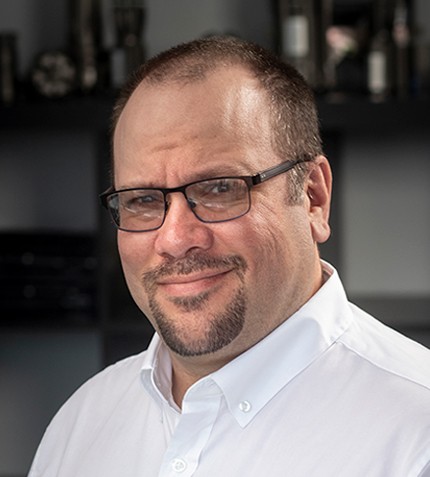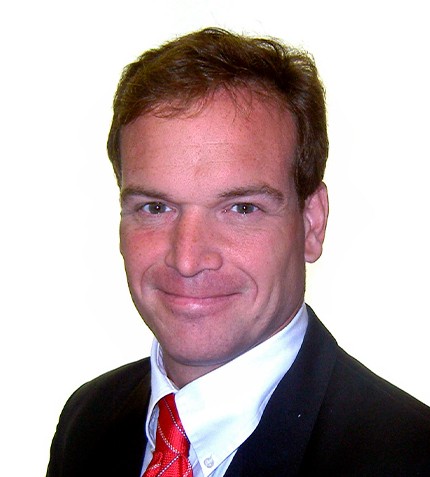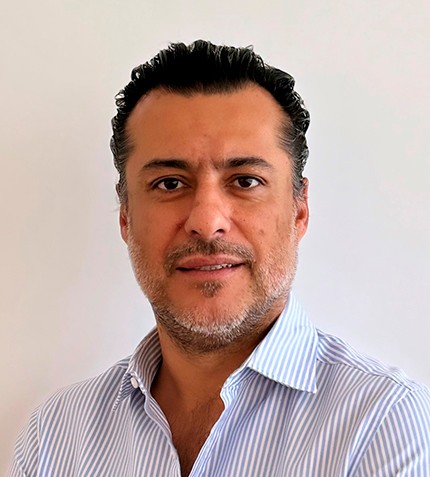
"Brazil continues to be a promising region for Kinross and the mining industry as a whole."
Gilberto Azevedo
PRESIDENT & GENERAL MANAGER, KINROSS BRAZIL
Could you provide an overview of Kinross Gold's recent key activities and milestones in Brazil and recent production results at Paracatu?
Kinross has been operating in Brazil at the Morro de Ouro mine in the municipality of Paracatu, Minas Gerais, since 2005. In 2022, we produced 577,000 oz of gold. This production represented 22% of the national production.
One of the ongoing projects that will positively impact our production is Gravity, which aims to increase global gold recovery in our process. The project will involve the installation of concentrators in the circulating load of the grinding circuit, together with the implementation of an intensive leaching reactor. The investment is around US$30 million and we hope to produce 20,000 oz/y with this project. The new circuit is already in the implementation process and is scheduled to fully operate at the end of the second quarter of 2024.
How does Kinross prioritize strong community relationships and support the local economy?
The Integrar Program, our main social investment platform, covers essential areas, such as culture, job and income generation, education and environmental education. Over the last twelve years, we have invested around R$30 million in this program, benefiting approximately 60 thousand people.
Tax Incentive Laws are an effective way of directing resources that would otherwise be allocated to income tax to support funds, programs and social projects. For 2023, we have more than 30 projects scheduled, totalling R$11.1 million. Of these, R$10.2 million will be allocated to Paracatu, with a direct impact on the areas of Education, Culture, Sports, Youth Protagonism, Tourism and Income Generation. The remainder will be directed to the municipalities of Caçu and Cachoeira Alta, where we have hydroelectric plants.
Furthermore, our direct contribution to the municipality in 2023 is substantial, with investments totalling around R$13.6 million. This includes the recent renovation of the Gidalte School, whose contribution was R$1.6 million, the renovation work on the Maria Trindade School, budgeted at around R$2 million, which began recently, and the renovation of the Municipal Hospital, a work of extreme importance for the population of Paracatu, which will receive R$10 million for essential improvements.
Could you discuss Kinross Brasil Mineração's approach to technology and innovation?
At Kinross, we are committed to constantly investing in innovative extraction technologies and improving our operational efficiency and safety. A concrete example is our mine dispatch system, which monitors approximately 100 pieces of equipment in real time, including drills, excavators, trucks and tractors. This guarantees efficient and safe production.
We recently took an important step by implementing autonomous operation of part of our fleet of Pit Viper 271 drilling rigs. The project began in 2021 and, currently, three drills operate independently, receiving data and parameters from technicians to carry out the work. This automation reduces operating intervals, resulting in a significant increase in the number of holes drilled in the same amount of time, which in turn has boosted productivity and safety in our operations.
What is Kinross Brasil Mineração's approach to ESG?
Kinross has set ambitious goals aligned with the objectives of the 2015 Paris Agreement. Our
commitment includes reducing scope 1 and 2 emissions intensity by 30% by 2030, as well as pursuing
carbon neutrality by 2050. In 2018 we acquired two hydroelectric plants, Caçu and Barra dos Coqueiros, located in Goiás, with capacities of 65 MW and 90 MW, respectively. These plants provide approximately 60% of the energy required for our Paracatu site, resulting in a significant 45% reduction in Scope 2 greenhouse gas emissions.
Furthermore, in 2022, at Kinross Paracatu, we adopted initiatives such as optimizing the fleet of 793 off-road trucks and replacing two loaders with diesel engines with electric models. With this, we avoided the emission of almost twelve thousand tons of CO2. In 2023, we will continue with our efforts, including replacing combustion pumps with electric ones and replacing combustion lighting towers with solar systems, projects that will help avoid the emission of 2,200 t of CO2.
We believe that mining can be carried out in a responsible and sustainable way, contributing to Brazil's economic growth and the well-being of the communities where we operate. Brazil continues to be a promising region for Kinross and the mining industry as a whole.










